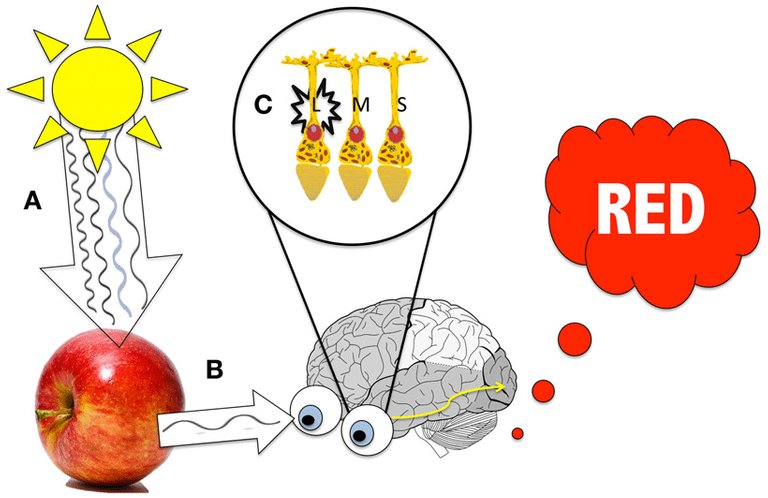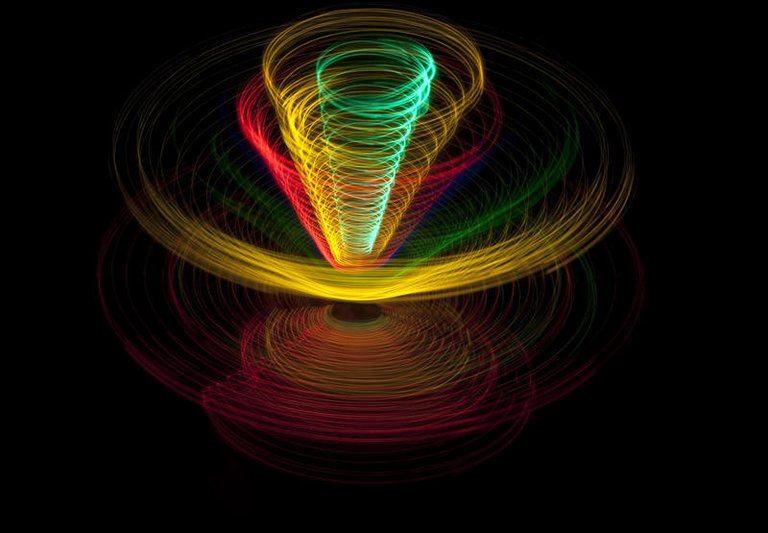How We See Colors the Way We See Them With Our Eyes
I want to say a very funny story that will lead us to the topic we are going to be discussing. It was a day I wanted to get a black Jean from the regular Igbo man boutique in my country. People who are familiar with Igbos know that they are business oriented and are in almost all types of trade. I wanted a black jean so I stepped into the shop. They have this common act of putting a blue bulb in the shop and would sell based on the color of the bulb. So when I told the man I wanted a black jean, he gave me a seemingly black jean and I tried it out.
The jean fit so it was packaged and I went home but upon reaching the house I checked the jean and I saw a yellow jean. As you would expect, I was furious and thought the guy had played a fast one on me. When I got back to the shop, the guy apologized and said the color of the jean outside the shop in the sun is yellow but under the blue colored light, it is black. Funny right but that was my ordeal that day.
This brings me to my topic today which is how do we see colors when we look at things. The word thing here would refer to both living and non-living. We know that different colors of light can add up to make different colors, but how does color vision work? Humans can differentiate more than 1 million colors so we think but then what is color because the ability to say this is color pink, or white or red doesn't mean we know color and it wasn't until Issac Newton arrived in the block with his physics that we were able to get a glimpse of what color is. There is a high chance you did the glass prism and white light experiment in junior school, well it was Newton's work to discuss light and wavelength which then stretches to color.
With physics, color is a unique wavelength of electromagnetic radiation in one narrow part of the spectrum visible to different organisms based on their wavelength. Amongst the numbers of visible, violet is the color with the shortest wavelength of within 380nm to 450nm, while red is the longest of the wavelength of 625nm to 740nm . Identifying colors with machines just has to do with measuring the wavelength of the light and this is why even when a color is the same wavelength number with different color, machines still see it as the same but for humans, our eyes will see them differently.
To understand how the eyes see colors, let's explain the eye a little. At the back of the eye in the retina are cones which are photoreceptors whose job are to absorb tiny units of light known as photons. The results are sent as electrical impulses down the optic nerves but while we can see numerous amounts of colors, we do not have one cone for one color rather, we have just three types of cones which each type absorbing different ranges of light which is either short, medium, or long.
Before scientists thought that each of the separate cones sent their separate different color signal to the brain to put together the color of an image. Over time, it was learned that our visual visual system learn combine colors to create different color. In banana, the peels absorbs red and green light but under blue light, it bounces it which is why it appears black. While we can see an equal combination of blue and red as purple, our brain finds it difficult to see a combination of Blue and Yellow simultaneously the same thing with red and green as the brain sees them as opposite. With the eyes and brain, for White the opposite is black, for red, the opposite is Green, for Blue the opposite is Yellow.
Since our brain do not work like cameras and computer, we have to see colors with a combination of three different visual cells, looking at four colors in three different channels to make the best guess and we can sometime make mistakes since we are trying to see a lot of colors from using our cone cells.
Reference
https://study.com/academy/lesson/visible-spectrum-definition-wavelengths-colors.html
https://www.sciencedirect.com/topics/computer-science/visible-spectrum
https://www.researchgate.net/publication/11911691_Autofluorescence_spectrum
https://www.amnh.org/explore/ology/brain/seeing-color
https://www.aao.org/eye-health/anatomy/photoreceptors
https://www.hunterlab.com/blog/what-is-color-and-how-do-we-see-color/
https://www.hunterlab.com/blog/human-factors-that-affect-how-we-see-colors/



The famous question why the sky is blue is also nice to explain that hehehe
nice post =)
Thanks for your contribution to the STEMsocial community. Feel free to join us on discord to get to know the rest of us!
Please consider delegating to the @stemsocial account (85% of the curation rewards are returned).
Thanks for including @stemsocial as a beneficiary, which gives you stronger support.